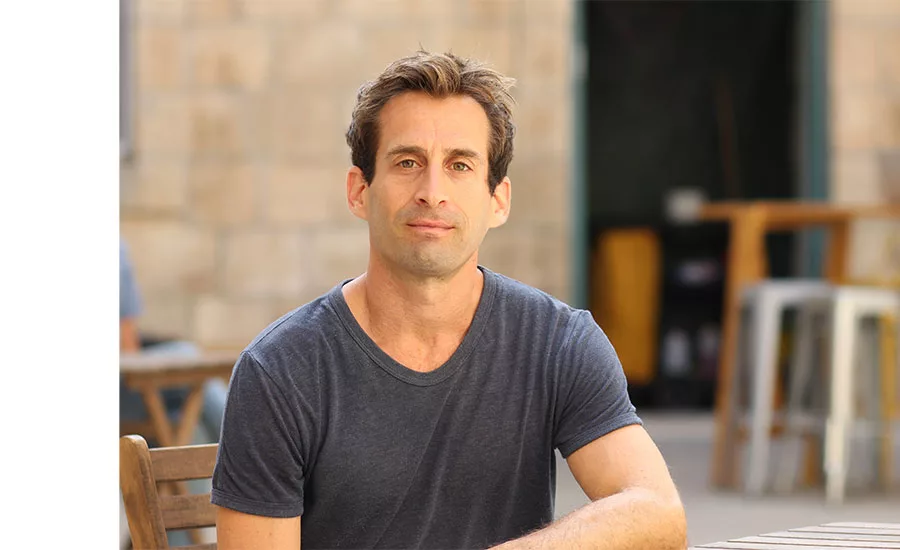Engineering R&D
Test for chemical contaminants on the spot


Inspecto’s portable contaminant detector works indoors or outdoors, detects predetermined chemical contaminants in foods or beverages, can store data in the cloud, and works with blockchain-based supply chains.
Photo courtesy of Inspecto
No matter where you are in the supply chain, you expect a certain level of quality from your inputs. For instance, a cereal manufacturer doesn’t want its corn loaded with mycotoxins or pesticides.
Of course, spot testing for chemical contaminants should come much sooner in the supply chain—not waiting until product arrives at a cereal manufacturer. But things happen, and sometimes a product or ingredient has been shipped while a manufacturer was waiting for lab test results that showed it positive for a contaminant.
A new, portable contaminant detector—now in trials by food processors and supply chain participants—promises to make testing for unwanted chemical constituents much faster and easier, truly “on the spot.” Inspecto Ltd., a food-tech startup, has introduced a new scanning device that detects chemical contamination in food in real time, at concentration levels as required by regulators, guaranteeing traceability and complete transparency.
The next-generation system scans the product or crop and identifies contaminants according to the specific user requirements. The device can be used indoors or outdoors, scans and processes samples in minutes, and provides a reliable, quantified measurement of the selected contaminants. All results are stored on the cloud, recorded and analyzed in real time. Blockchain integration is also available for supply chain participants that require it.
“Since each scan is conducted in real time, and the results are stored on the cloud, Inspecto can offer additional services to our customers that, until now, were impossible for them to implement,” explains CEO Avner Avidan. “For example, it enables our customers to approve or reject a shipment on the spot based on the results, and they can even use blockchain to store their information more securely.”
FE asked Avidan for some details.
FE: What brought about the concept for this device?
Avner Avidan: The idea of Inspecto came after the founders watched a program on a TV channel on vegetable contamination. The reporter checked all the major supermarket chains and tested a wide range of vegetables and fruits for pesticide residues. The results were alarming, and that was the trigger for us to act and develop a user-friendly solution.
FE: How long has this scanning device been in development? Who are its principal developers? Are there any patents or applied patents?
Avidan: The company was established in April 2016, and we dedicated the first year to research. There was a lot to learn about the food industry, the technology already used for contaminants testing, the shortcomings of the technology, and what could potentially be a good alternative. Only then, the development kicked into place, and we designed the first prototype that showcased the potential of our solution. The principal developers are our CTO, Dr. Lior Eligal; our head of R&D, Dr. Yael Nadel; and our technical adviser and partner from the U.S., Dr. Lili He. There are a number of applied patents.
FE: How does the device work? What technology is used?
Avidan: The device has three operating stages. The first is a smart mechanism for automatic sample preparation. Here, the user places a sample, for example 20 grams of coffee beans, into a disposable capsule. The capsule turns the sample into what is called an analyte, which is a concentrated liquid extract. From there, the second stage starts where the analyte is analyzed using spectral methods in combination with nanoparticles that isolate and enhance the signal of the contaminant we’re looking for. The third stage is transmission to the cloud and display of the results.
FE: How does the user interact with the device to test a sample? Is there any sample preparation required? Can it be used to test liquids?
Avidan: As far as the user is concerned, the interaction is very simple. The user places the sample in the capsule, inserts it into the device, presses a button to activate it and waits for the results.
Sample preparation is a must if we’re to provide a reliable report, and this feature is conducted automatically in the device. The device can be used for solids and liquids.
FE: Are there limits as to what chemicals can be tested (for example, pesticides, mycotoxins, cleaning chemicals/disinfectants, etc.)? Can more than one chemical constituent be checked with the same sample?
Avidan: So far, we successfully conducted feasibility tests on various types of chemicals, including pesticides, antibiotics, adulterants, mycotoxins, colorants, preservatives and others.
Currently we can detect a single contaminant per test and are working on adding multiple detection capabilities. But because our single detection process is fast and simple to operate, if the client needs to detect more than one contaminant, they simply, in turn, use another capsule.
FE: What about testing for intentional chemical adulteration, e.g., melamine, poisons, etc.?
Avidan: So far we successfully conducted feasibility tests on various types of chemicals just mentioned. Melamine will be one of our next developments, following extremely successful feasibility tests.
FE: Can the scanner find unknown constituents, indicating the sample is contaminated and not pure? If so, can it identify new contaminants?
Avidan: The device is programmed to detect specific contaminants. As such, there is no option to run a general scan for a general warning without knowing what you’re looking for.
FE: How does the cost of using this scanner compare with lab testing or food company-owned spectroscopy equipment?
Avidan: When food companies use outsourced labs for their quality assurance tests, the direct cost (as in excluding all related costs to the process, such as shipping of the sample, labor time etc.) starts from $90 per test. This is one of the industry’s barriers when processors look at increasing the frequency of the tests they conduct.
Large-scale food companies have the ability to finance the devices, namely HPLC or GCMS, and conduct the tests themselves. The cost of these devices ranges from $20,000 to $300,000, and the cost per scan is calculated based on each company’s internal resources.
Inspecto offers a competitive alternative to both. The device consists of a base unit and a disposable capsule for a single test. The cost of Inspecto’s Gen-1 device is competing with the low range of the market, but it’s the cost of the capsule that breaks it, as it starts in single digits if you’re conducting frequent testing and increases slightly if you’re not a frequent user.
FE: Will this equipment be available in the U.S.? How soon?
Avidan: One of our current pilot partners is a leading food manufacturer worldwide, based in the U.S. They will be our first customer in the U.S., starting in 2020.
FE: Are you still looking for food/beverage company partners to test the scanner?
Avidan: We are always looking for new companies to work with. We strongly believe in building a long-lasting relationship that helps us pinpoint the need of each company. We first ask for information on their detection needs, what contaminant and what food product or ingredient. Then we visit their site to meet their team to have a better understanding of their method of operation and how we can maximize our testing and provide effective and accurate results.
For more information, visit www.inspecto.io
Looking for a reprint of this article?
From high-res PDFs to custom plaques, order your copy today!







